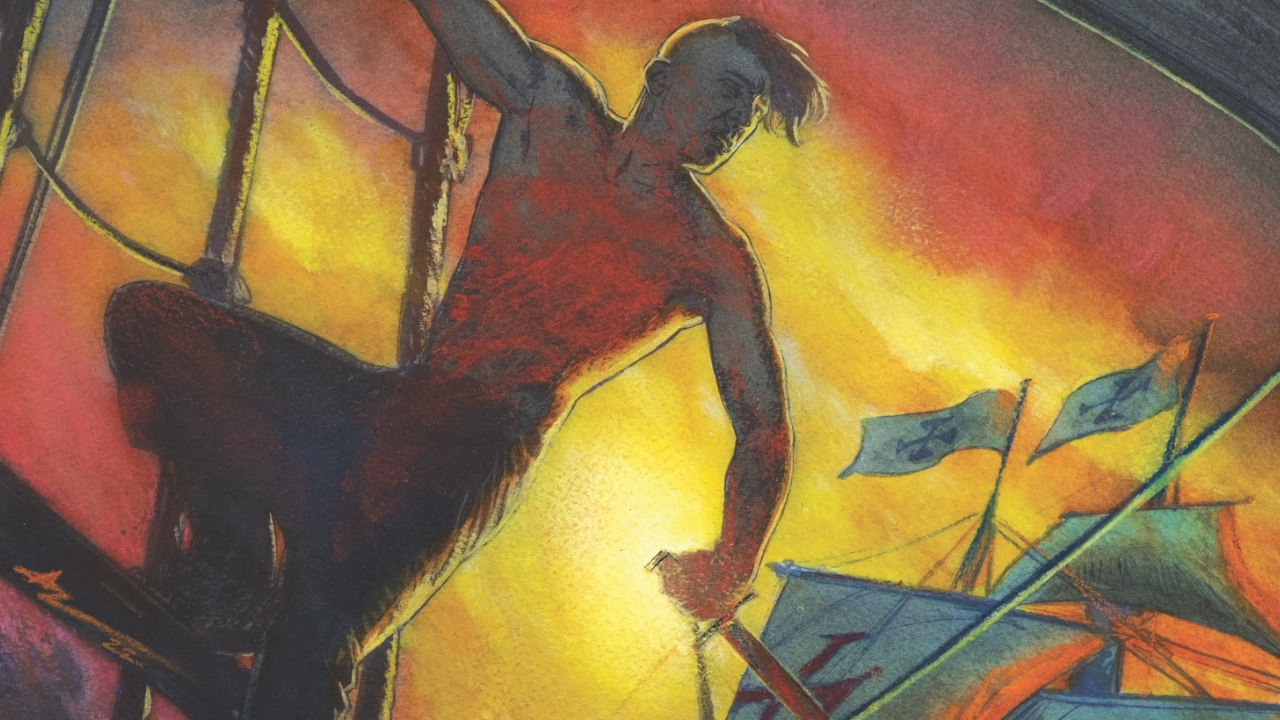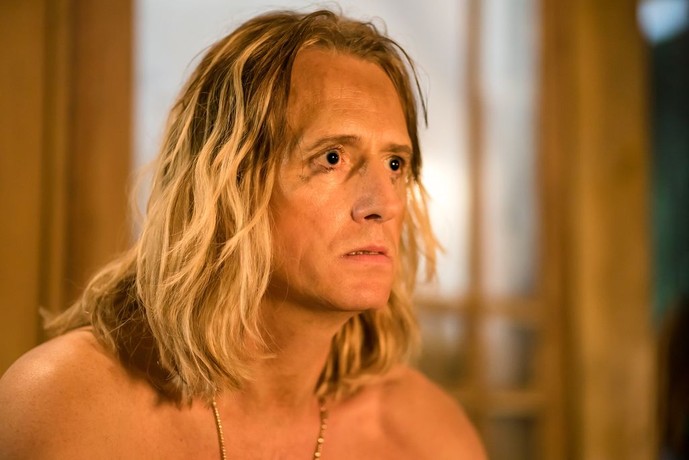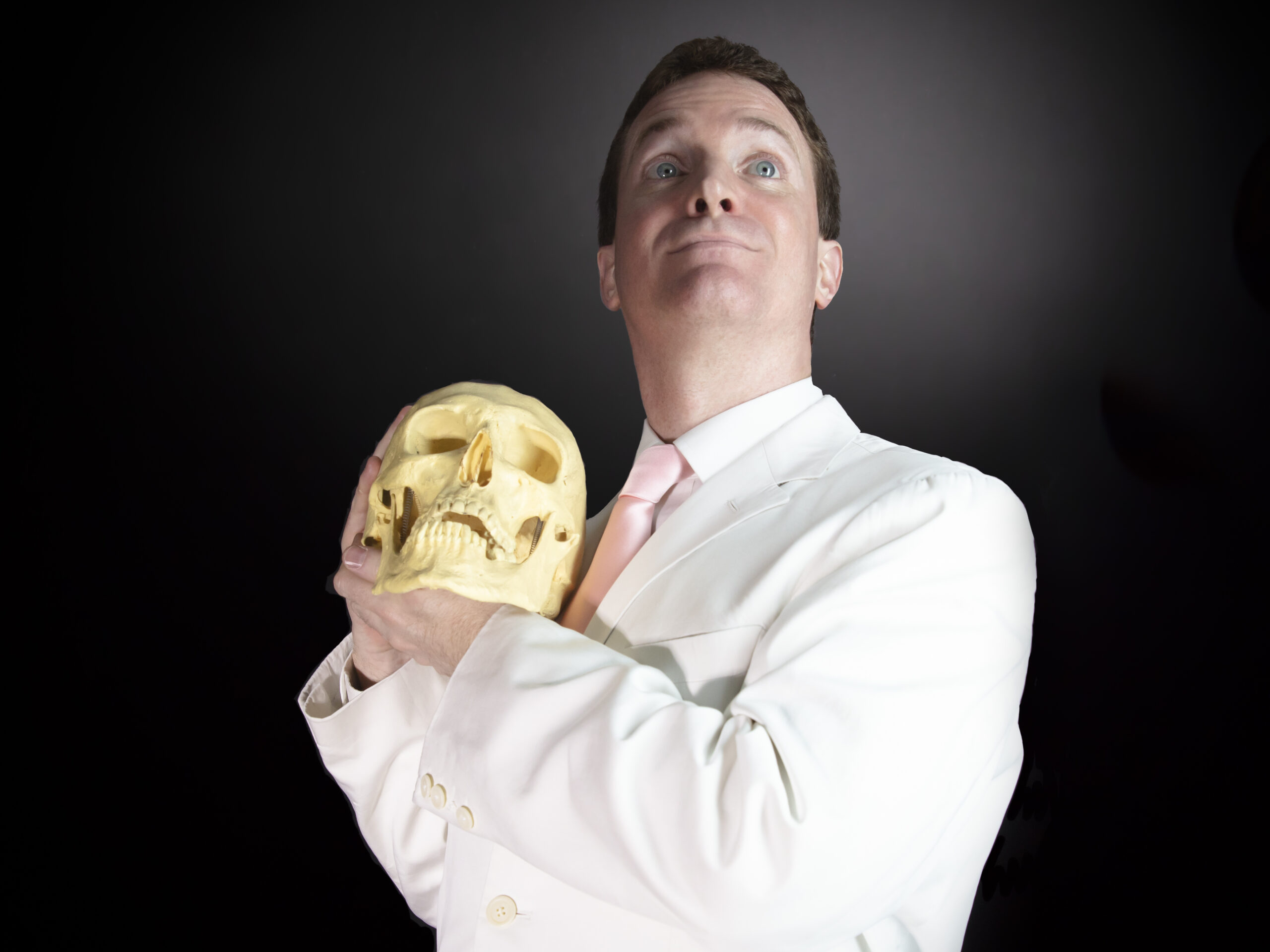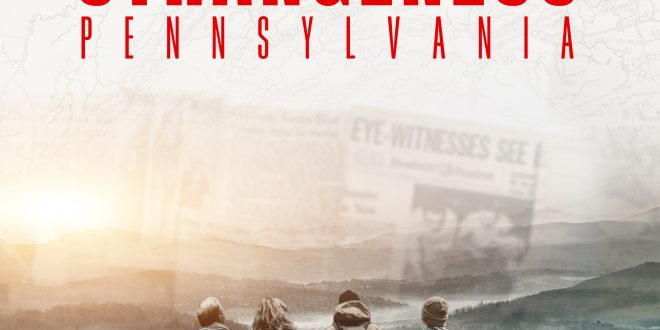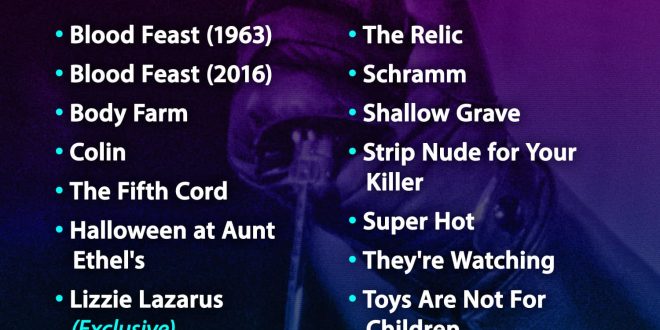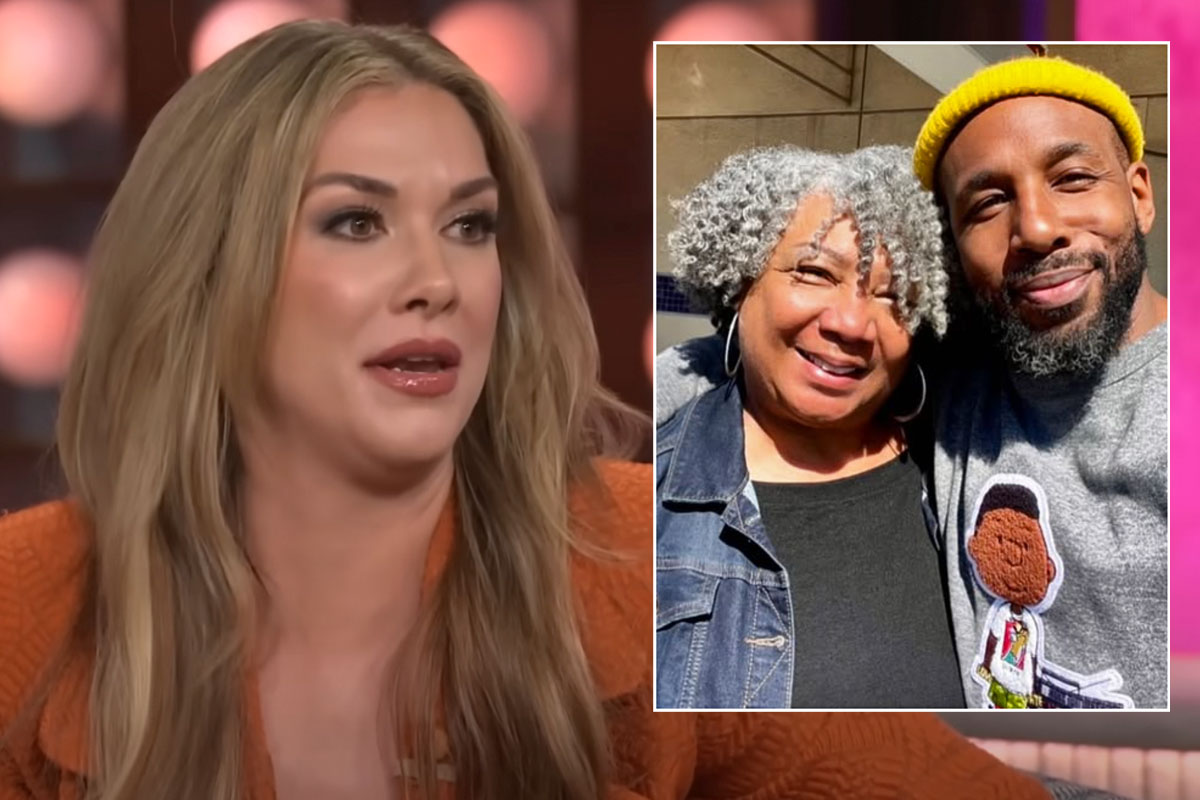Stephen Graham Jones says that comics saved his life.
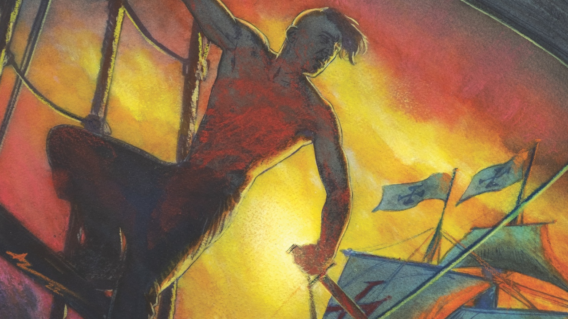
Stephen Graham Jones is a prolific horror author, known for books such as My Heart Is A Chainsaw and The Only Good Indians. As an Indigenous writer, his works are often centered on Indigenous characters and issues that aren’t often seen in the genre. Now, Jones is entering the world of graphic novels with his new series Earthdivers.
Read the synopsis below:
Earthdivers is an unforgettable and thrilling series that unites four Indigenous survivors in an apocalyptic near future as they embark on a bloody, one-way mission to save the world by traveling back in time to kill Christopher Columbus and prevent the creation of America. Earthdivers explores the staggering forces of history and the individual choices we make to survive it.
Dread Central was lucky enough to chat with Stephen Graham Jones on the phone about Earthdivers, how comics saved his life, and more.
Dread Central: Why do you want to do a comic book now?
Stephen Graham Jones: Probably because it’s my first chance to do a comic book. I’ve been into comic books since I was 12 years old. But I feel like I’ve been writing comic books for my whole life.
Just having an issue or a ton of work, on the shelf, on the new shelves done at Time Warp, my local comic book store, it’s hard to even put into words. It’s just a dream, it’s what I’ve always wanted to be.
DC: That’s amazing. Where did the idea for Earthdivers come from for you?
SGJ: James Welch did a book called Killing Custer which is nonfiction. It’s an analysis of the Battle at Little Bighorn. I always thought that title was really catchy. Because who wouldn’t want to kill Custer? I mean, who in Native America wouldn’t want to kill Custer anyway. And I couldn’t do that because he’s already had that book. To tell you the truth, in elementary school, we’re always taught in 1492, Columbus sailed the ocean blue and all that stuff. It’s kind of like we’re being brainwashed into buying into our own attempted genocide. And so Earthdivers is my moonshot.
DC: Hell yeah. I love that you take Columbus and you say, “Fuck it, we’re going to go back and completely redo history and take back the narrative.” It feels like a revenge story for me. Did you see it as a revenge tale in a way?
SGJ: Oh, definitely. It’s definitely a justice fantasy. While Earthdivers isn’t quite a traditional original slasher, it does adhere a whole lot of the slasher conventions, for sure.
DC: Why do you think it’s important to have these revisionist history narratives, especially from an Indigenous perspective saying, “Fuck colonialism.”? Like, why do you think that is such an important perspective and story to tell, especially through a graphic novel?
SGJ: Well, to do a thing, you have to dream it first. I think stories, particularly with the visual component, I’m part of that dream in action. Not everyone has the time to sit around and detail, articulate the shape, the timbre, the tone, the flavor, the smell of that dream. But I do have that kind of time. I can put the dream into panels and pages, and work with new artists, and try to give people an idea of how it could’ve been. Hopefully that will shade over how it should be. Hopefully, it can instill in people a sense of “I want to push back”.
DC: Hell yeah. So you obviously are very prolific in the written word. But how different was this process for you to write a graphic novel and be collaborating with an artist to bring your words to life?
SGJ: Oh, it was very different. Like, with a novel, I get sent off for two months or five months, however long, and they tell me, “Come back with the manuscript and then we can work on it and put it together.” And that’s the process I’ve been doing for 20, 25 years at this point. But comic books, yes, are radically different.
Number one, it’s wonderful to work with these editors. People who have done hundreds of comic books, and I just draw on their experience, over, and over, and over. I trust what they tell me. But Davide Gianfelice the artist, he’ll give me sketches and I try to, of course, choreograph the page turns, the splash pages. And for the specific layout, unless it’s a really unique page, I generally don’t have any suggestions about a big panel here, the font has three tiers, etc.
Davide has the experience and visual imagination that he can make the story pop on the page in a way that I can’t even approach. And what I love about working with him, he’s a very talented artist, is his art can be so expressive that it functionally erases the words I have written. So when we go in, after he’s done the art, and the letterer has come in and put the captions and all the stuff in, he can sometimes erase all our dialogue or a caption, because of Davide’s work.
DC: That’s amazing. That’s so cool. I’m especially thinking of the first page where we meet th e four characters. Cach tribe that they’re from is just quickly written next to each of them. It’s very basic context, but I feel like it sets the stage so well without having to put much writing into it.
SGJ: I say it’s all Davide, but it’s also Mark Doyles, the editor. It feels like it was 14 years ago, but it’s apparently 10 months. He was the first person who approached me at IDW and pitched him this idea. I told him the one problem that I’m having with this idea is it feels like we need to do a zero issue, like the prequel, explaining how the world feel down to its knees.
And Mark said, “No, not really.” He said, “Go back and look at All-Star Superman page one.” And so I did, and All-Star Superman page one is Earthdivers page one. When we’re talking about the apocalypse or the post-apocalypse in today’s world, you don’t have to jump in. We can just do wide strokes.
People know what the apocalypse is. When they see the Statue of Liberty on the first page, we got Planet of the Apes so instilled in our heads, in our hearts, that we know exactly what that means. So, I don’t have to talk about the big tidal wave came in knocked the Statue of Liberty down. I could just like gesture that way, and the audience can move from there. That’s what Mark taught me from the very first page.
DC: I was going to ask about having this be a post-apocalyptic narrative. Why situate this inside of the post-apocalypse, rather than any other time period?
SGJ: I think setting it in the post-apocalypse makes the journey back in time to fix the coming disaster more urgent. I wish right now, in 2022, we felt that urgency. So setting [Earthdivers] in a time where things have fallen apart, hopefully that can be a little bit of forward progress to changing somebody’s mindset about the world that they live in right now.
DC: I want to hear more about how you chose those specific tribes to be represented with these characters.
SGJ: Well, I mean, my impulse is always to make everybody Blackfeet. But I always do like to write natives in a white world. I’m not saying that translates across everybody else at all. I know the arcs that are coming, the stuff that’s going to happen not just in issues one through six but 7 through 12 and 13. I have a pretty good idea what’s happening there. So I needed people to be familiar with different regions and different customs in order to make things work.
DC: So can you foreshadow anything that’s to come in the upcoming issues?
SGJ: Sometimes the trick in the type of story I’m telling is what is the force of antagonism? And there are two forces of antagonism here. One is the characters’ hesitations about this mission they’re on and whether it’s just or fair to impose their own needs on the whole world.
But then there’s also just plain old psychics. What if the timeline doesn’t want to be changed? If we can keep the line that going back in time is possible, then how does history react? How does gravity and space collapse or rupture to allow this to happen? Those are issues that are going to be coming for sure.
DC: You’ve talked about how you’ve loved comics, so can you just tell me more about your relationship to comics and graphic novel growing up? What were some of your favorites?
SGJ: I grew up way out deep in the country and but we were lucky, we got two and a half channels. Cartoons came on on Saturday mornings. I would eat Frosted Flakes ceral until I got sick and watch like four hours of cartoons. And so I think I did have interactions with Justice League and stuff like that when I was younger.
But I didn’t see my first comic book for a while. Let me explain it. We’d go at the grocery store every two weeks on a Wednesday afternoon because of my mom’s schedule. She’d take us into town, it’s like a half hour drive. Then halfway there, there was a gas station up in the middle of nowhere. She would give me and two brothers 75 cents each and let us go into that store while she gassed up. So we’d go in and get a Coke, I would always grab Dr. Pepper. It was my big treat for the two weeks. One day, for the first time, I saw this round rack of comics, a spinner rack.
Then I just touched it to make sure it was real. I spun it, and the book that stopped in front of me at eye level was Secret Wars #4. On the front of the issue is the Hulk and he’s holding up this impossible a mountain of rock. The other heroes are under him, he’s barely able to hold it up, and it says something 33 billion tons or something. I pick it up, and that day I bought a comic book instead of my Dr. Pepper. A comic book was my treat for the next two weeks. And so the next time we came through, I beelined to that rack. I quit buying Dr. Pepper for a while to buy comic books. I tried to finish Secret Wars and you know how it is at the gas station, it’s not the first one or two there.
So I didn’t read the first three issues for years. But there is an issue in there, number 10. The premise of Secret Wars is this cosmic entity of vast power is curious about desire so he kidnaps all the heroes and villains and cobbles together a battle planet for them to fight so he can understand good and evil, and desire and all this stuff. And Dr. Doom is one of those combatants. But Dr. Doom doesn’t want to be anybody’s chess piece.
So Dr. Doom says, “I want you power Beyonder.” And so in issue 10, Dr. Doom comes for Beyonder. There this big splash page two-thirds of the way through the issue where Dr. Doom is forcing himself against the Beyonder, this amazing, amazing, vast cosmic power. Dr. Doom has had a leg cut off, I think he lost an arm, his mask is getting ripped off, he’s perforated and pierced and shattered in so many ways. But with his one good arm he’s still reaching, he’s still trying.
And all through my adolescence, it was rough coming of age, I guess. There were guns and knives and jail. A lot of the time it was quite crazy and every time that I was in a situation where I thought I can’t go forward anymore, I would go back to issue 10 of Secret Wars. I would think about Dr. Doom with one arm left, he’s still fighting, and I was like, “Well, if Dr. Doom can do it, I can do it.” So I would push on and I would make to the next place and the next place and the next place.
I really truly feel like if not for that one splash page of issue 10 of Secret Wars, then I don’t know if I would’ve made it out of high school the same. So as far as what comic books means to me, that’s what they mean to me. They’re a core of who I am and I feel they saved my life.
DC: That’s incredible. And so what have been some of your all-time favorite comics, especially more horror-leaning comics?
SGJ: The Maxx is probably my all-time favorite comic. I loved to go back and read The Maxx. I love , I love Matt Wagner’s Grendel, I love all the various Grendel I’ve read. Of course, I’m forever in love with Sandman and Watchmen.
I think Alison Bechdel’s Fun Home is amazing and that end page is one of the most beautiful endings in a story.
And for horror, Scott Synder can really pull it off. He did amazing work in Wytches.
DC: Oh, Wytches is one of my all-time favorite horror books, period.
SGJ: Yeah, oh, it’s so good. And Cullen Bunn, I’m really impressed with what he does. One of my favorite comic book creators is Jeff Lemire.
DC: And so I love your fiction, and I think your fiction is incredibly descriptive. What was it like taking these visceral moments you’re so used to writing out and scripting them for the artists? How detailed did you get in writing the gory moments or did you let the artist just be free with that?
SGJ: Yeah, that’s a really good question. I haven’t thought about that. Instead of like saying, “This piece of flesh clings to the knife for four inches,” and that kind of stuff, what I told NAME in my description is I say, “I want this to be the second goriest panel not only in this book but that you’ve ever drawn.” And I say, “Second goriest because ten pages you’re going to give the goriest to.” Then I say, “Don’t put any restrictions on it, get it as gross as you can right here.”
The different thing about fiction and comic books as far as creating these visceral panels and moments is you can really freeze time. I mean, you can do that in fiction as well, but it takes more muscle.
DC: I’m always curious about that like collaboration between artists. I want to ask you horror movie questions very quickly. I’m just very curious, what to you is the scariest horror movie that you’ve ever seen?
SGJ: I think the scariest one for me is probably Paranormal Activity, that one really got to me.
DC: I’m a found footage freak, so I love that.
SGJ: I love it. I think something nobody gives Paranormal Activity credit for is the upstairs bedroom, not Micah and Katie, but the one that’s kind of down the hall from them. They pan past it a couple of times and there’s that ginormous white stuffed bear just marooned in the corner and it never moves. But I am 110% waiting for that bear to lumber down the hall at every moment in that story and that added so much for me.
I saw [Paranormal Activity] actually a few weeks, maybe even a couple of months early here in Boulder. I remember I didn’t sleep that night. The only other horror movie I’ve ever seen in a theater that left me unable to sleep was The Ring back in [2002].
DC: Wow, that’s amazing. So there’s a growing representation of Indigenous horror creators. Who would you recommend horror-wise either books, or movies, or comics from Indigenous horror creators that need more recognition?
SGJ: I would say Jeff Barnaby’s Blood Quantum is amazing. Right now we’re still living in the moment of Prey. That Prey movie blew me away, I loved seeing it, I loved hearing [inaudible 00:23:59] Comanche, I don’t know Comanche, but I love the idea that there are some little kids out there, 5 years old, 10 years old seeing themselves fight a monster on the screen. You can’t really overstate how important it is because when I was growing up, I didn’t have that. I had to steal Conan the Barbarian, and John McClain, and Rambo. I had to steal them for me and my tribe because I didn’t haven’t any representation in all these movies and stuff I liked.
But nowadays, kids don’t have to do that, they can say, “Naru is me,” or, “I can be Naru”. And that to me and wonderful and I cannot wait for more and more of that stuff to be happening.
In terms of comics and a place to find a sampling of Indigenous comics, there’s an anthology I have a piece in. It’s called A Howl, it just came out, it’s a werewolf anthology with all works by Indigenous creators.
DC: That’s amazing. Well, Stephen, thank you so much for talking with me about comics, Earthdivers, and movies. This was incredible and I’m so excited for everyone to read this novel.
SGJ: And you know what else though? There’s also the chance that we get to watch it after a while because it just sold to 20th Televison!
DC: Oh, my God, wow, congratulations.
SGJ: Thank you, thank you!
Earthdivers #1 hits shelves for IDW Publishing on October 5, 2022.

